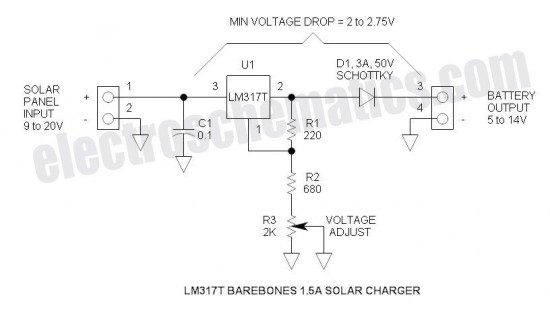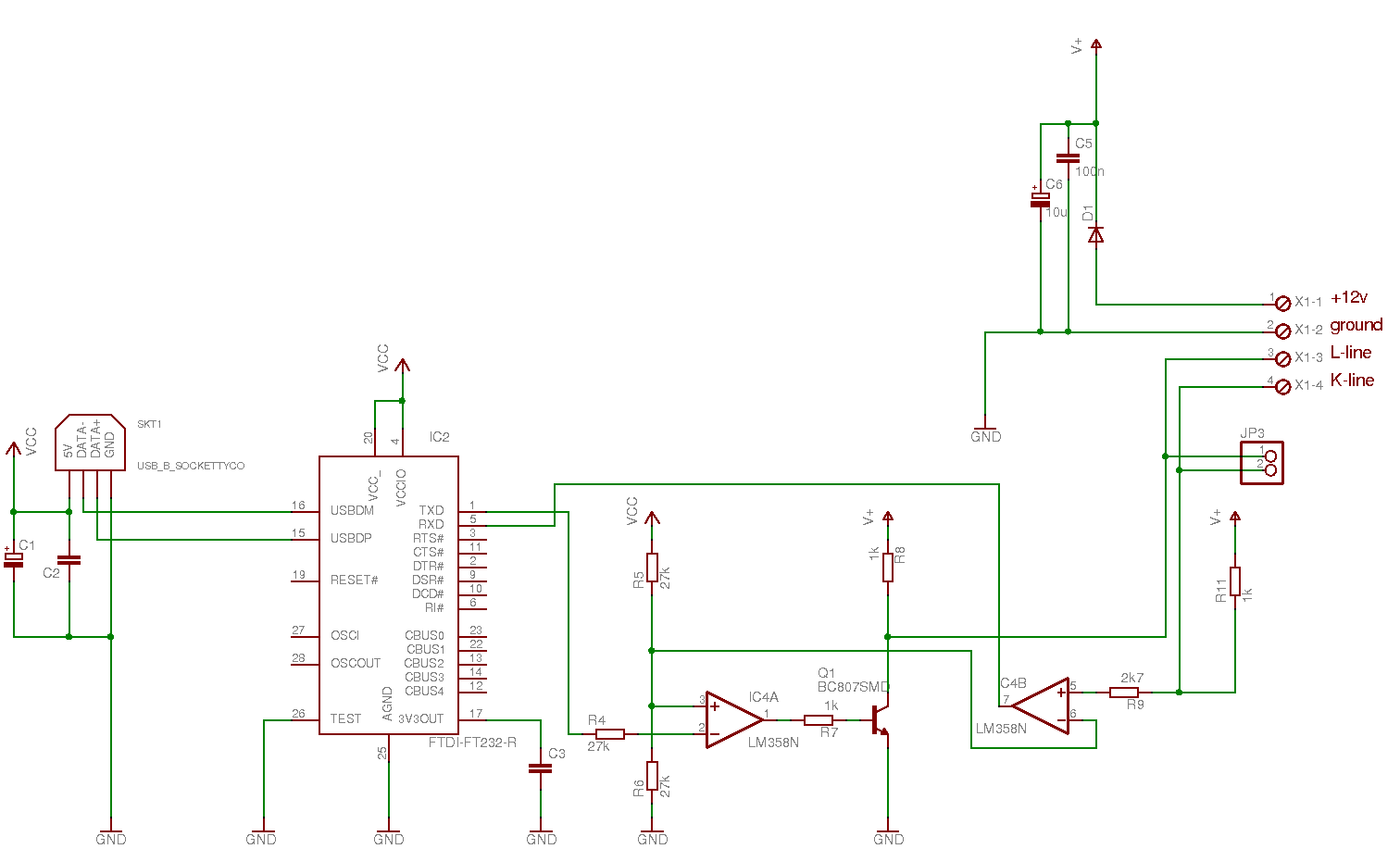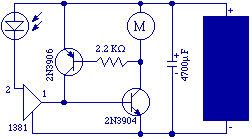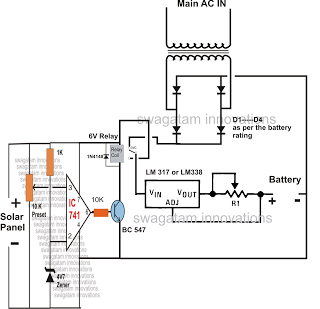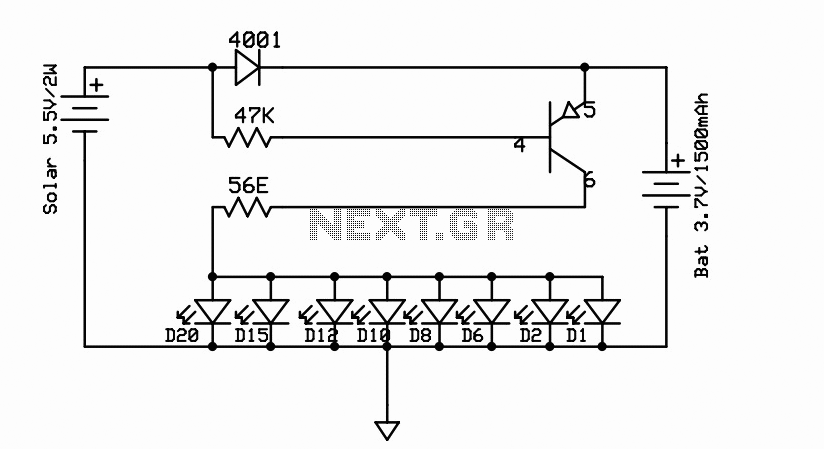
The Easter Solar Engine
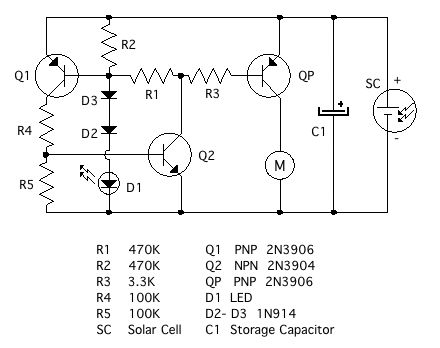
A solar engine is a circuit that collects and stores electrical energy from solar cells. When a specific amount of energy has been accumulated, it activates a switch.
The solar engine circuit typically consists of several key components: solar cells, a charge controller, a battery for energy storage, and a load switch. The solar cells convert sunlight into electrical energy, which is then fed into the charge controller. The charge controller regulates the voltage and current coming from the solar cells to ensure that the battery is charged safely and efficiently.
The battery acts as a storage medium, allowing the energy harvested from solar cells to be used when sunlight is not available. It is essential to select a battery with an appropriate capacity to match the expected energy input from the solar cells. Common battery types used in solar engine circuits include lead-acid, lithium-ion, and nickel-metal hydride batteries.
When the battery reaches a predetermined voltage level, the charge controller signals the load switch to activate. This switch can control various types of loads, such as LEDs, motors, or other electronic devices, allowing them to operate using the stored solar energy. The load can be connected directly to the battery or through additional circuitry that may include voltage regulators or protection circuits to ensure the safe operation of the load.
In summary, the solar engine circuit is an efficient system for harnessing solar energy, storing it, and utilizing it as needed. Proper design and component selection are crucial to ensure optimal performance and longevity of the system.A Solar Engine is a circuit that takes in and stores electrical energy from solar cells, and when a predetermined amount has accumulated, it switches.. 🔗 External reference
The solar engine circuit typically consists of several key components: solar cells, a charge controller, a battery for energy storage, and a load switch. The solar cells convert sunlight into electrical energy, which is then fed into the charge controller. The charge controller regulates the voltage and current coming from the solar cells to ensure that the battery is charged safely and efficiently.
The battery acts as a storage medium, allowing the energy harvested from solar cells to be used when sunlight is not available. It is essential to select a battery with an appropriate capacity to match the expected energy input from the solar cells. Common battery types used in solar engine circuits include lead-acid, lithium-ion, and nickel-metal hydride batteries.
When the battery reaches a predetermined voltage level, the charge controller signals the load switch to activate. This switch can control various types of loads, such as LEDs, motors, or other electronic devices, allowing them to operate using the stored solar energy. The load can be connected directly to the battery or through additional circuitry that may include voltage regulators or protection circuits to ensure the safe operation of the load.
In summary, the solar engine circuit is an efficient system for harnessing solar energy, storing it, and utilizing it as needed. Proper design and component selection are crucial to ensure optimal performance and longevity of the system.A Solar Engine is a circuit that takes in and stores electrical energy from solar cells, and when a predetermined amount has accumulated, it switches.. 🔗 External reference
